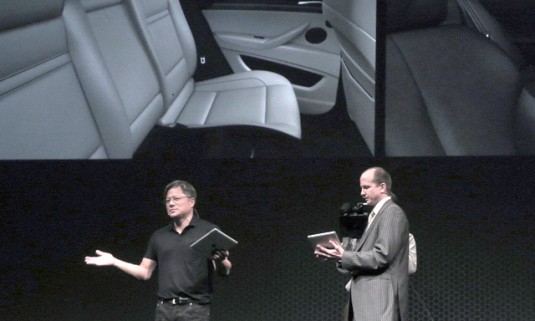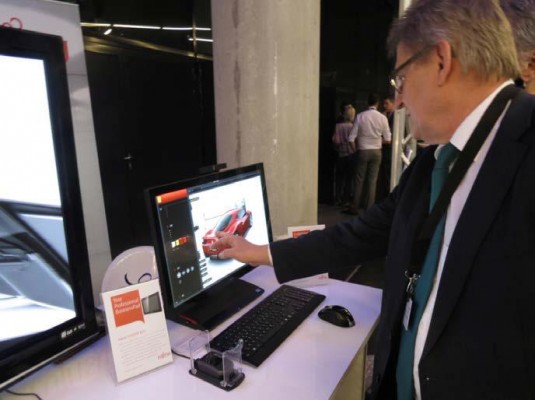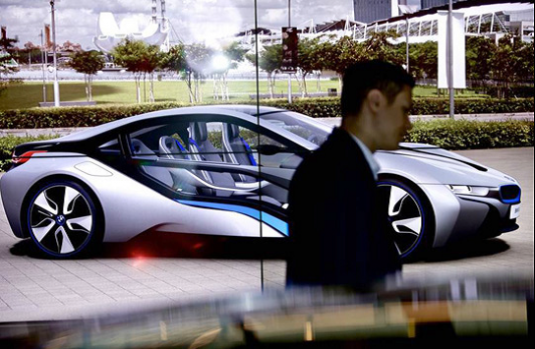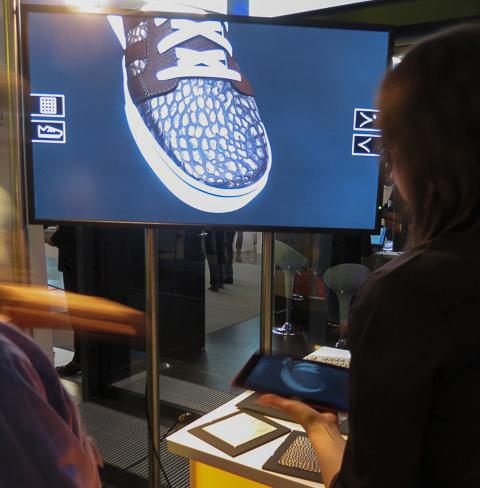More than a rendering company, RTT now offers a variety of visualization technologies.
By Jon Peddie
RTT, the visualization company in Munich, Germany, held its fourth RTT Excite conference, and it has become a must-attend event. This year more than 1,000 came to the Kleine Olympiahalle (right by the Great Big Olympiahalle) and across the road from the amazing BMW museum. Attendees saw days’ worth of presentations, and RTT showed the world just what it could do. RTT had 60 demo stations, most of them showing their most advanced visualization technologies, ranging from AR applications for clothes to cinema, and of course amazing physically accurate rendering.

RTT CEO Ludwig Fuchs told an audience of press attendees how the company, founded in 1999, now has over 700 employees in 17 offices worldwide. At the conference this year, the company showed some of its early forays into the entertainment and retail worlds. The company’s Flavor3D tool is a product for the film and video industry, an area the company has not shown much interest in previously. However, as it looks to give its customers an end-to-end experience, it’s obviously looking for new ends.
Nvidia and RTT have been BFFs for a while. RTT is happy to use all the pixels Nvidia can push. In turn, the fine-tuned visualizations produced by RTT are a great showcase for both Nvidia’s graphics capability and the potential of GPU compute. Lately, Nvidia has been on the world tour of Grid and Remote computing. The message is all about leveraging the power of GPUs wherever they are, in the back office, in the server, in the cloud. Nvidia CEO Jen-Hsun Huang gave the keynote at RTT Excite and talked quite a bit about all the ways remote computing can be put to use in the design world.

In contrast to the people attending the effects and animation conference FMX (also in Germany the same week), the people at RTT are ready for this message. They want to believe, which is a good thing because the demo was not as smooth as Huang would have liked—moving big huge images revealed artifacts, but RTT had the demos to back him up. And, in a way, there’s something sort of comforting about demos that aren’t perfect; they let us know that they’re real.
There was plenty of the thrillingly unreal at the conference as well. The company unveiled its new explorations into the entertainment world and also work it has been doing in virtual retail.
The cars
After a visit to Stuttgart, where the Mercedes symbol shines above the train station like a guiding beacon, and Audi’s shuttled us around the city, it made sense that RTT is all about cars—designing cars, visualizing cars, selling cars. The company showcased visualization tools that enabled people to see how a car might look during the design process and, of course, out at the end in the marketing process.

In between there were demonstrations of the virtual showroom. In fact, Huang showed it off with an assistant from RTT using an iPad. The idea is that people will be able to configure their car, agree on a price, and schedule delivery using any type of appropriate display or front end. It might be a large-screen display, or it might be an iPhone.
RTT’s demos also included digital signage applications for retail, including the ability to try on different clothes. In another demo, we saw Nike’s tool for visualizing tennis shoes with different materials. Gold brocade, anyone? (Luxology made a big deal about this too at 4 Design in the U.K. the previous week.)
It’s intriguing to see what is already being done. For instance, with chatted with Paul Debevec, Associate Director of Graphics Research at the University of Southern California, and he talked about the potential of reality capture techniques like the multi-camera light stage, which can capture faces and bodies and create 3D models. Debevec created the model that has now become famous as Digital Ira. Huang took the opportunity to ask, why Ira? Clearly, he thought a model more who was comely might be a better choice. Debevec laughed and said, “Ira is just some guy down the hall.” And really, the point is, we’re all just the people down the hall. Ira may not be gorgeous, but there’s no denying he’s a real person. Debevec told us they’ve made so many advances with the technology, he’d like to revisit some models he’s already made including the famous Digital Emily, who shocked the tech world with what’s possible. He also said he thought it would be interesting to capture people in different stages of age.

It was interesting to see the FMX conferences and RTT back-to-back. For all the heavy lifting RTT is doing, its business model marries service with visualization and interactivity. In general, the tools people are using at RTT’s customer sites are custom built. The people at FMX are the ones in the back rooms building effects, modeling, and programming. They’re gravitating toward more off-the-shelf tools. Interestingly enough, RTT’s next step seems to be to build more of those tools.





